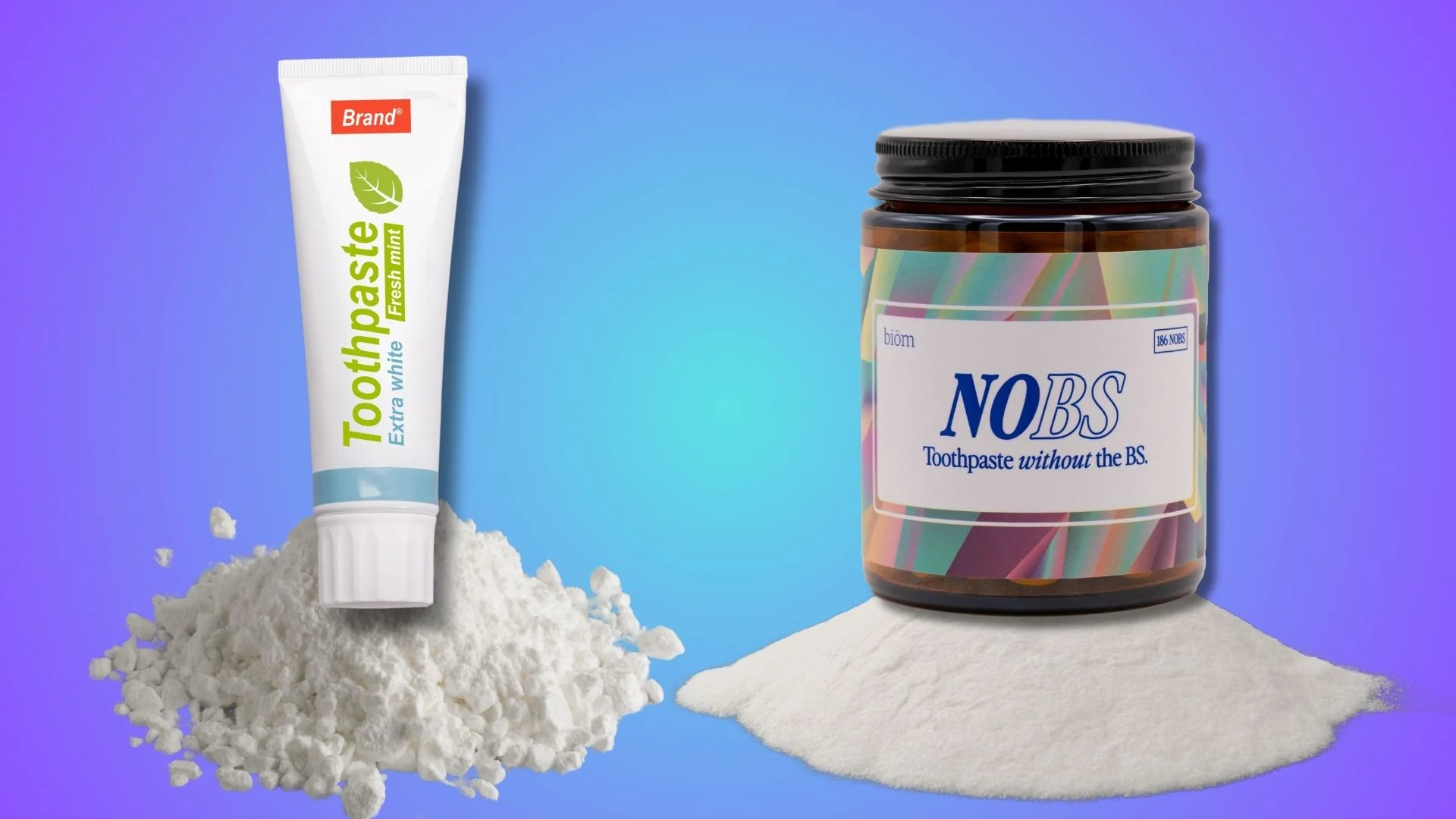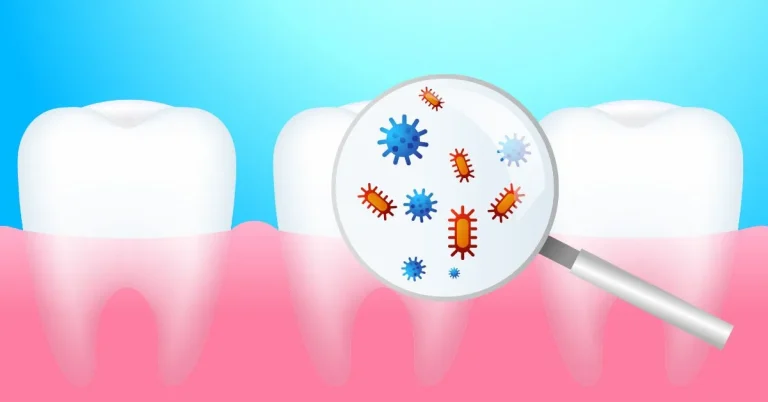Is Hydroxyapatite Toothpaste Better Than Fluoride? A Comprehensive Comparison
Have you ever stood in the toothpaste aisle, scratching your head over which product to choose? With so many options out there, it can feel like a real maze. One option that’s been gaining traction lately is hydroxyapatite toothpaste. As consumers become more health-conscious and curious about alternatives to traditional fluoride toothpaste, understanding what hydroxyapatite brings to the table is crucial.
In this article, we’ll dive into the nitty-gritty of hydroxyapatite and how it stacks up against fluoride. We’ll explore its role in tooth enamel, remineralization effects, safety profiles, and effectiveness in preventing cavities and reducing tooth sensitivity. By the end, you’ll be equipped with the knowledge to make an informed decision about your oral care routine. So, let’s get started!
What is Hydroxyapatite?
Hydroxyapatite (HAP) might sound like a mouthful, but it’s actually a pretty fascinating compound. It’s a naturally occurring mineral form of calcium apatite and makes up a significant portion of our tooth enamel and bone structure. In fact, about 97% of tooth enamel is composed of hydroxyapatite! This means that when we talk about dental health, hydroxyapatite plays a starring role.
So why is this important? Well, hydroxyapatite helps maintain the strength and integrity of our teeth. When enamel is worn down—whether from acidic foods, grinding teeth, or just the passage of time—hydroxyapatite can assist in rebuilding and remineralizing those areas. This natural process is crucial for keeping our smiles bright and healthy.
But how does hydroxyapatite toothpaste work in practice? When you use a toothpaste containing hydroxyapatite, it delivers these essential minerals right where they’re needed most: your teeth! This can help repair early signs of decay and strengthen enamel against future damage. It’s like giving your teeth a little spa treatment every time you brush!
As we move forward in this comparison, keep in mind that hydroxyapatite isn’t just a trendy buzzword; it’s a powerful ally in the fight for better dental health. Now that we have a solid understanding of what hydroxyapatite is, let’s dive into how it compares to fluoride when it comes to remineralization effects.
Remineralization Effects: Hydroxyapatite vs. Fluoride
When it comes to dental health, remineralization is a key player in the battle against cavities and enamel erosion. But what exactly does remineralization mean? Simply put, it’s the process of restoring lost minerals to tooth enamel, helping to repair damage and strengthen teeth. Both hydroxyapatite and fluoride have been touted for their abilities to aid in this process, but how do they stack up against each other?
Hydroxyapatite’s Role in Remineralization
Hydroxyapatite toothpaste works by depositing microscopic particles of hydroxyapatite onto the surface of your teeth. These particles bond with the enamel, effectively filling in tiny cracks and imperfections. Think of it as a protective shield that not only helps to repair early signs of decay but also strengthens your teeth against future attacks from acids and bacteria.
Research has shown that hydroxyapatite can significantly enhance the remineralization process. A study published in the Journal of Dentistry found that hydroxyapatite was able to remineralize enamel more effectively than fluoride in certain scenarios. The researchers noted that hydroxyapatite not only helped restore mineral content but also improved the overall structure of the enamel.
Fluoride’s Mechanism
Fluoride, on the other hand, has been a staple in dental care for decades. It works by incorporating into the tooth structure during its formation, making enamel more resistant to acid attacks. When applied topically through toothpaste or mouth rinses, fluoride promotes remineralization by attracting other minerals like calcium and phosphate back to the tooth surface.
While fluoride has proven effective in reducing cavity rates over the years, its mechanism can be a bit controversial. Some studies suggest that excessive fluoride exposure can lead to dental fluorosis, a condition that causes discoloration and pitting of teeth. This concern has led many consumers to seek out fluoride-free alternatives like hydroxyapatite.
The Bottom Line
So, which is better for remineralization: hydroxyapatite or fluoride? The answer may depend on individual needs and preferences. Hydroxyapatite offers a natural approach with fewer safety concerns, while fluoride has a long history of effectiveness in cavity prevention. If you’re looking for a gentle yet effective way to support your dental health, hydroxyapatite might just be worth considering.
Now that we’ve explored how these two ingredients compare in terms of remineralization, let’s take a closer look at their safety profiles. Are there any risks associated with using fluoride or hydroxyapatite? Let’s find out!
Safety Profile: Hydroxyapatite vs. Fluoride
When it comes to choosing dental products, safety is a top concern for many people. After all, you want to ensure that what you’re putting in your mouth is not only effective but also safe for you and your family. In this section, we’ll take a closer look at the safety profiles of hydroxyapatite and fluoride, highlighting their potential risks and benefits.
The Safety of Hydroxyapatite
One of the standout features of hydroxyapatite toothpaste is its impressive safety profile. Since hydroxyapatite is a naturally occurring mineral that’s already present in our teeth and bones, it’s generally considered safe for use by all age groups. There are no known side effects associated with hydroxyapatite, making it an appealing option for those who are cautious about the ingredients in their oral care products.
For parents, this is particularly reassuring. Hydroxyapatite toothpaste can be a great choice for children, as it poses no risk of dental fluorosis—a condition that can occur when kids ingest too much fluoride during tooth development. This makes hydroxyapatite a safe alternative for families looking to avoid potential fluoride-related issues.
Fluoride: Benefits and Risks
Fluoride has long been heralded as a hero in cavity prevention, but it’s not without its controversies. While fluoride can effectively strengthen enamel and reduce the risk of cavities, there are some concerns regarding its safety, especially with excessive exposure.
The primary risk associated with fluoride is dental fluorosis, which can occur when children consume too much fluoride while their teeth are still developing. This condition can lead to white spots or streaks on the teeth and, in severe cases, pitting or discoloration. Additionally, some studies have raised concerns about potential links between high levels of fluoride exposure and other health issues, though these claims are still debated within the scientific community.
The Verdict on Safety
In summary, hydroxyapatite shines when it comes to safety—its natural composition and lack of known side effects make it a solid choice for anyone concerned about the risks associated with fluoride. On the other hand, while fluoride has proven benefits for dental health, its safety profile can be a bit more complex, particularly for young children.
As you weigh your options between hydroxyapatite and fluoride toothpaste, consider your personal preferences and any specific health concerns you may have. Now that we’ve covered safety, let’s move on to how these two ingredients perform in preventing cavities—because at the end of the day, that’s what we all want: strong, healthy teeth!
Effectiveness in Preventing Cavities
When it comes to oral health, preventing cavities is a top priority for many. After all, nobody wants to face the drill at the dentist’s office! In this section, we’ll delve into how hydroxyapatite and fluoride stack up against each other in the cavity prevention department. Let’s see which ingredient might be your best bet for keeping those pearly whites intact.
Hydroxyapatite and Cavity Prevention
Hydroxyapatite has been making waves in recent years for its ability to not only remineralize enamel but also actively prevent cavities. Studies have shown that hydroxyapatite toothpaste can effectively inhibit the growth of harmful bacteria in the mouth, particularly Streptococcus mutans, which is a primary contributor to tooth decay. By creating a protective barrier on the enamel surface, hydroxyapatite helps shield teeth from acid attacks that can lead to cavities.
For instance, a clinical trial published in the International Journal of Dentistry found that participants using hydroxyapatite toothpaste experienced a significant reduction in cavity formation compared to those using standard fluoride toothpaste. This suggests that hydroxyapatite may offer an effective alternative for cavity prevention, especially for those who are sensitive to fluoride or prefer a more natural approach.
Fluoride’s Long-Standing Role
Fluoride has been the gold standard in cavity prevention for decades. Its effectiveness stems from its ability to strengthen enamel and make it more resistant to acid attacks from bacteria. Fluoride works by promoting the remineralization process and inhibiting demineralization, thus reducing the risk of cavities.
Numerous studies have demonstrated fluoride’s efficacy in lowering cavity rates, particularly in children. For example, research published in the American Journal of Public Health showed that communities with fluoridated water supplies had significantly lower rates of dental caries compared to those without. This long-standing evidence has solidified fluoride’s reputation as a reliable cavity-fighting agent.
Comparing Effectiveness
So, who wins the battle of cavity prevention: hydroxyapatite or fluoride? The answer isn’t cut and dry. Hydroxyapatite offers a promising alternative with its natural composition and ability to combat harmful bacteria while effectively remineralizing enamel. Meanwhile, fluoride boasts decades of research supporting its effectiveness in reducing cavities.
Ultimately, your choice may depend on personal preferences and specific dental needs. If you’re looking for a fluoride-free option that still packs a punch against cavities, hydroxyapatite could be worth a try. On the other hand, if you’re comfortable with fluoride and appreciate its proven track record, sticking with traditional fluoride toothpaste may be your best bet.
Now that we’ve explored how these two ingredients fare in preventing cavities, let’s shift gears and discuss their impact on tooth sensitivity—an issue many people face at some point in their lives.
Reducing Tooth Sensitivity
Tooth sensitivity can be a real pain—literally! If you’ve ever winced while sipping a hot cup of coffee or biting into a cold scoop of ice cream, you know what I’m talking about. Sensitivity occurs when the underlying dentin of the tooth becomes exposed, often due to enamel erosion or gum recession. Fortunately, both hydroxyapatite and fluoride toothpaste claim to help alleviate this discomfort. Let’s take a closer look at how each ingredient tackles tooth sensitivity.
Hydroxyapatite’s Approach to Sensitivity
Hydroxyapatite toothpaste has gained attention for its ability to reduce tooth sensitivity effectively. When applied, hydroxyapatite particles can penetrate the exposed areas of dentin, forming a protective layer over the nerve endings. This barrier helps to block stimuli that can trigger sensitivity, making it a great option for those who experience discomfort with hot, cold, or sweet foods.
Numerous studies support the effectiveness of hydroxyapatite in reducing sensitivity. For example, research published in the Journal of Clinical Dentistry found that participants using hydroxyapatite toothpaste reported significant improvements in sensitivity compared to those using fluoride-based products. Many users have noted that they experience less discomfort after switching to hydroxyapatite toothpaste, making it an appealing choice for those who struggle with sensitive teeth.
Fluoride and Sensitivity Relief
Fluoride toothpaste has also been shown to help with tooth sensitivity, although its mechanism differs from that of hydroxyapatite. Fluoride works by strengthening enamel and promoting remineralization, which can help reduce the risk of further enamel erosion and exposure of sensitive dentin. Some fluoride toothpastes are specifically formulated for sensitive teeth and contain additional ingredients like potassium nitrate, which helps calm the nerves inside the teeth.
While fluoride can provide relief from sensitivity over time, it may not offer immediate results like hydroxyapatite. For individuals looking for quick relief from sudden sensitivity, hydroxyapatite may be the better option.
The Sensitivity Showdown
In summary, both hydroxyapatite and fluoride have their merits when it comes to reducing tooth sensitivity. Hydroxyapatite offers a more immediate solution by forming a protective barrier over exposed dentin, while fluoride helps strengthen enamel and prevent further issues over time. If you’re dealing with sensitivity as a primary concern, you might find that hydroxyapatite toothpaste provides quicker relief.
As we wrap up our exploration of these two ingredients, let’s take a moment to reflect on everything we’ve learned about hydroxyapatite and fluoride in terms of remineralization, safety, cavity prevention, and sensitivity reduction. It’s time to draw some conclusions!
Conclusion
Choosing the right toothpaste can feel like a daunting task, especially with so many options available. Hydroxyapatite and fluoride both offer unique benefits for dental health, and understanding their differences is essential for making an informed decision.
- Hydroxyapatite is a naturally occurring mineral that plays a vital role in tooth enamel. It effectively remineralizes teeth, reduces sensitivity, and has a strong safety profile, making it an excellent choice for those seeking alternatives to fluoride.
- Fluoride has a long-standing reputation for preventing cavities and strengthening enamel. While it’s effective, concerns about dental fluorosis and other potential risks may lead some consumers to seek fluoride-free options.
- Both ingredients contribute to cavity prevention, but hydroxyapatite may provide quicker relief from tooth sensitivity due to its ability to form a protective barrier over exposed dentin.
Ultimately, the best choice depends on your individual needs and preferences. If you’re looking for a gentle, natural option that supports remineralization and reduces sensitivity, hydroxyapatite toothpaste might be worth considering. On the other hand, if you prefer the proven track record of fluoride in cavity prevention, sticking with fluoride toothpaste could be the way to go.
As you navigate your oral care routine, remember that maintaining good dental hygiene—regular brushing, flossing, and dental check-ups—remains crucial regardless of which toothpaste you choose. Your smile deserves the best care possible!
What are your thoughts on hydroxyapatite versus fluoride? Have you tried either type of toothpaste? Share your experiences in the comments below!
FAQs
What is Hydroxyapatite (HAp)?
Hydroxyapatite is a naturally occurring mineral and the main component of tooth enamel and bones. In toothpaste, it’s used to remineralize teeth.
What is Fluoride?
Fluoride is a mineral that helps prevent tooth decay by strengthening tooth enamel and making it more resistant to acid attacks from bacteria.
How does Hydroxyapatite toothpaste work?
HAp particles bind to the tooth surface, filling in microscopic defects and remineralizing enamel, thus helping to reduce sensitivity and prevent cavities.
How does Fluoride toothpaste work?
Fluoride incorporates into the enamel structure, creating fluorapatite, which is more resistant to acid attacks and helps to repair early signs of decay.
Is Hydroxyapatite as effective as Fluoride in preventing cavities?
Research suggests that Hydroxyapatite can be as effective as fluoride in preventing cavities, with some studies showing comparable results.
Is Hydroxyapatite safe?
Yes, Hydroxyapatite is considered safe for all ages, as it is biocompatible and naturally found in the body.
Is Fluoride safe?
Fluoride is safe in recommended amounts. However, excessive ingestion of fluoride, especially in young children, can lead to fluorosis (discoloration of teeth).
Can Hydroxyapatite help with tooth sensitivity?
Yes, Hydroxyapatite can help reduce tooth sensitivity by remineralizing the enamel and blocking exposed dentinal tubules.
Are there any side effects of using Hydroxyapatite toothpaste?
Hydroxyapatite toothpaste is generally well-tolerated, with no known significant side effects when used as directed.
Who should consider using Hydroxyapatite toothpaste?
Individuals looking for a fluoride-free alternative, those with sensitivity to fluoride, children, and anyone seeking to remineralize their teeth naturally may consider using Hydroxyapatite toothpaste.







